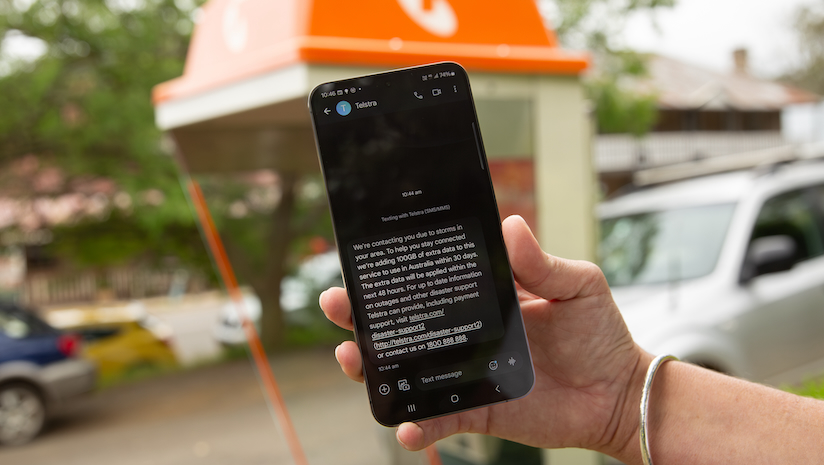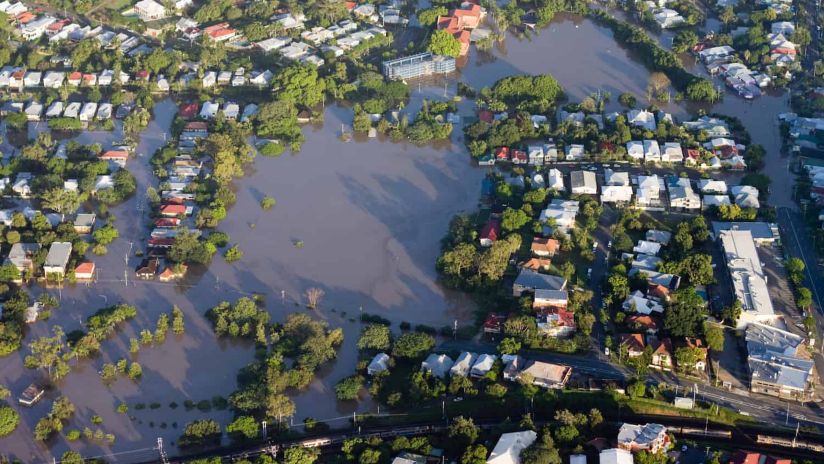How small businesses can prepare for disasters
If you’re a small business owner and an emergency alert for fires, floods or a cyclone goes out, one of your first thoughts is probably how you’re going to keep the lights on and the payments flowing. Here’s how you can prepare your business to stay open – and protect your livelihood – no matter how early or late you start.

Depending on where you are, it’s important to note that many of these disasters are a matter of when – not if. So it’s vital you start planning for a disaster as early as possible.
Whether you’re well prepared or are more likely to act at the last minute, we’ve got a disaster preparedness checklist for you. This is just a guide though – for a full disaster preparedness checklist, take a look at one prepared by your State Emergency Service like this one from NSW.
First things first
Before you get started on your disaster prep, there’s an important thing most businesses can do to get ready. It’s all about getting online and going digital.
That way, even if they can’t open their physical doors, they can still keep their digital doors open and continue to operate, support their customers and drive income.
Not every business will be able to move fully online, but taking a step back to look at your operations allows you to see what could potentially go online ahead of a disaster to support the continued operation of your business, as well as enhance your businesses growth into the future.
Five weeks out
If you’re prepared, you can take appropriate steps to ensure business continuity in the face of disaster.
Get to know your EFTPOS terminal
EFTPOS is the preferred method of payment for most customers. As part of business continuity planning, take the time to ensure your EFTPOS terminals are configured to use alternative connectivity in the event of a service disruption.
EFTPOS terminals can be impacted by mobile network outages and power outages, with differing scenarios depending on exactly what occurs.
In the case of a power outage, EFTPOS terminals will not work unless they have a back-up source of power. Where EFTPOS terminals can access back-up power, they’ll be able to continue operating as normal if the mobile network is still operating, but if the mobile network is also impacted only terminals that have electronic fallback or use a Telstra enterprise satellite product will be able to continue operating.
In the case of a mobile network outage, where power otherwise remains available:
- Terminals with wireless and Wi-Fi/ethernet capabilities will be able to toggle between the two connectivity options and should switch automatically to a Wi-Fi/ethernet connection where one is available.
- Terminals with dual SIMs will be able to toggle between different mobile networks, provided they have SIM cards from different mobile network operators inserted.
- Terminals with electronic fallback options will be able to continue processing transactions within certain payment limits, despite there being no mobile connectivity.
- Planning ahead helps – outages are inevitable, both planned and unplanned, and preparing ensures your business keeps on running smoothly.
By knowing your terminal, you may be able to connect it to another WiFi network should you find one at your next temporary place of business.
Consider a satellite phone or repeater device
Sometimes in a disaster, the traditional communications network can go out in your area due to infrastructure being affected.
If you absolutely need to stay in touch to get your business going, you might consider a satellite phone.
It’s worth pointing out, however, that satellite connectivity also has vulnerabilities. Signals can be affected by heavy clouds or storms and satellite dishes can be damaged by cyclones and bushfires.
Alternatively, you can also take a look at our range of repeaters and extenders to see if one suits your needs. Legal network coverage extension devices amplify the existing network signal your mobile device receives, which extends the area that your device can work in. These devices can help you connect to the Telstra mobile network from further away than normally possible, or in areas where a signal may struggle to penetrate – such as indoors, or in hilly or dense terrain.
It’s important to note that boosters are illegal to own or operate on any network in Australia, and they can disrupt or even prevent others from making calls to emergency 000.
Five days out
You know there’s potential disaster conditions forecast this week, so now is the time to get your business in order. Check out some of the above steps too if you have extra time.
Back up your data
Store your important data, like contact information, registration and financial/payroll information, in the cloud using an online service.
Get a corded phone
A cordless fixed line phone is convenient, but remember, most cordless phones rely on electric power to operate, so you may lose the use of your landline during a power outage. A corded phone draws its electricity directly from the phone line (excluding fixed line phones on nbn) and can be used during a power outage.
It’s important to remember that since the nbn provides your business line, it will be unavailable during a power outage. It’s best to have a mobile phone or satellite phone handy for this instance, especially in remote areas.
Invest in an alternative charger
If you don’t already have one, purchase a phone charger that isn’t dependent on a power outlet. A popular choice is a ‘power bank’ battery pack that can be charged from a power outlet prior to an event and used if grid electricity is unavailable, or a portable solar panel charger or in-car charger.
Five hours out
If you just received an emergency alert and you’ve only got hours to prepare, you can still take steps to make sure your business stays online.
Gear up
Ensuring business continuity when you have limited time is about making sure you have the absolute basics to get back on your feet. You won’t be able to pack everything, but you can grab the essential gear.
Anything with crucial business data on it that can’t be backed up in a hurry should be secured or stowed with you – provided it’s safe to do so. That means hard drives or whole desktop computers. You likely won’t have time for anything else.
Charge your phone. Right now.
Every second matters when you need power. Anyone looking to charge their phone before heading out of the house knows this. And if you got a text recommending evacuation, you might not know when you’ll be near a working power point again.
Charge your phone on the highest wattage charger you can find nearby for as long as you can. Don’t forget to turn it on loud while you do this so you can hear calls and messages come through.
When you’re ready to leave, take the phoneandthe charger. You might not be able to find another one of these in a hurry if you’re evacuated.
Use local information sources
Online, social media accounts for your local authorities and emergency services will share crucial information. Your local broadcaster will also share information over the radio – make sure you have a battery-powered radio or car radio to listen in on.
Below we’ve provided a short list of some official information sources from various federal, state and territory governments that you should read if you’re preparing yourself and your business against disaster.
Government agencies for emergency response information:
- Triple Zero
- New South Wales Emergency
- Queensland Emergency
- ACT Emergency Services Agency
- Victoria Emergency
- TAS Alert
- Alert SA
- Western Australia Emergency
- NT Emergency Service
- Federal Government Disaster Assistance

